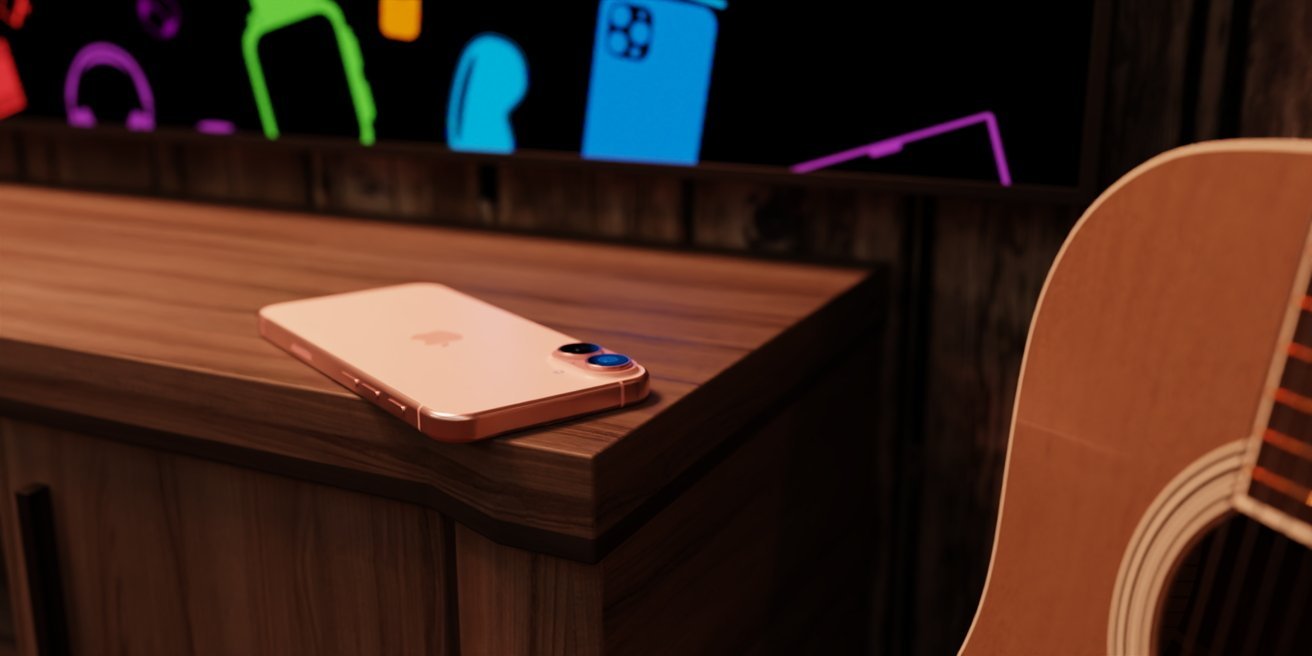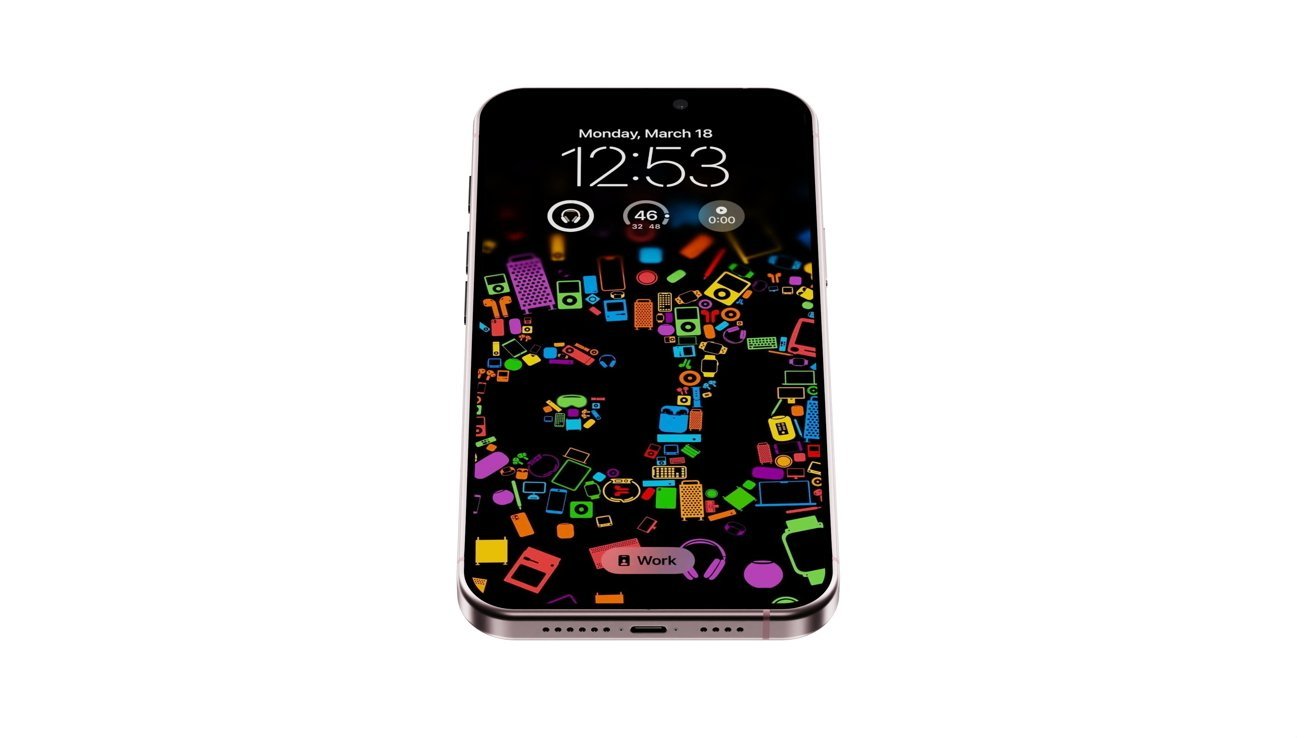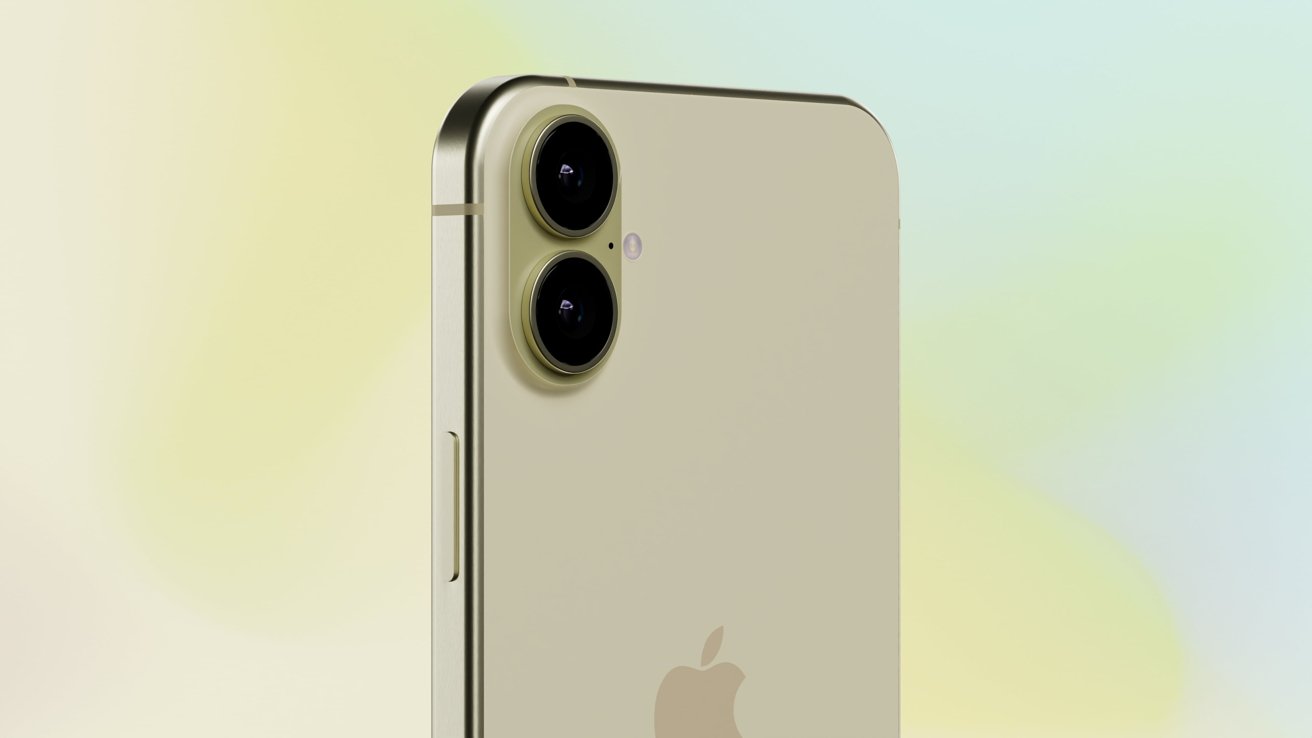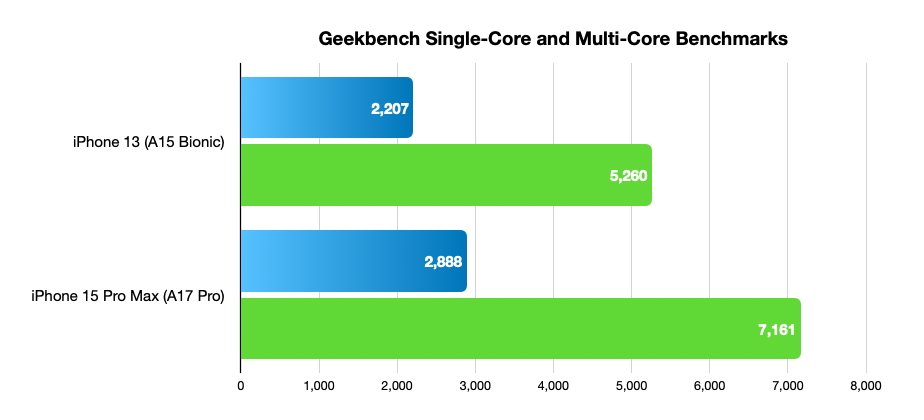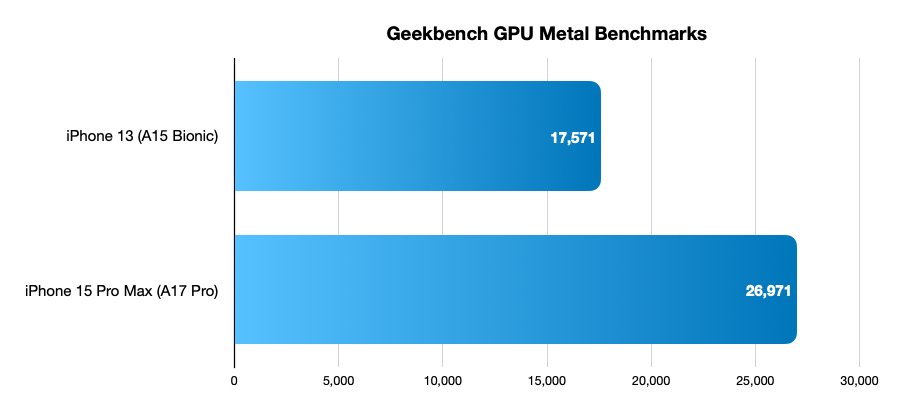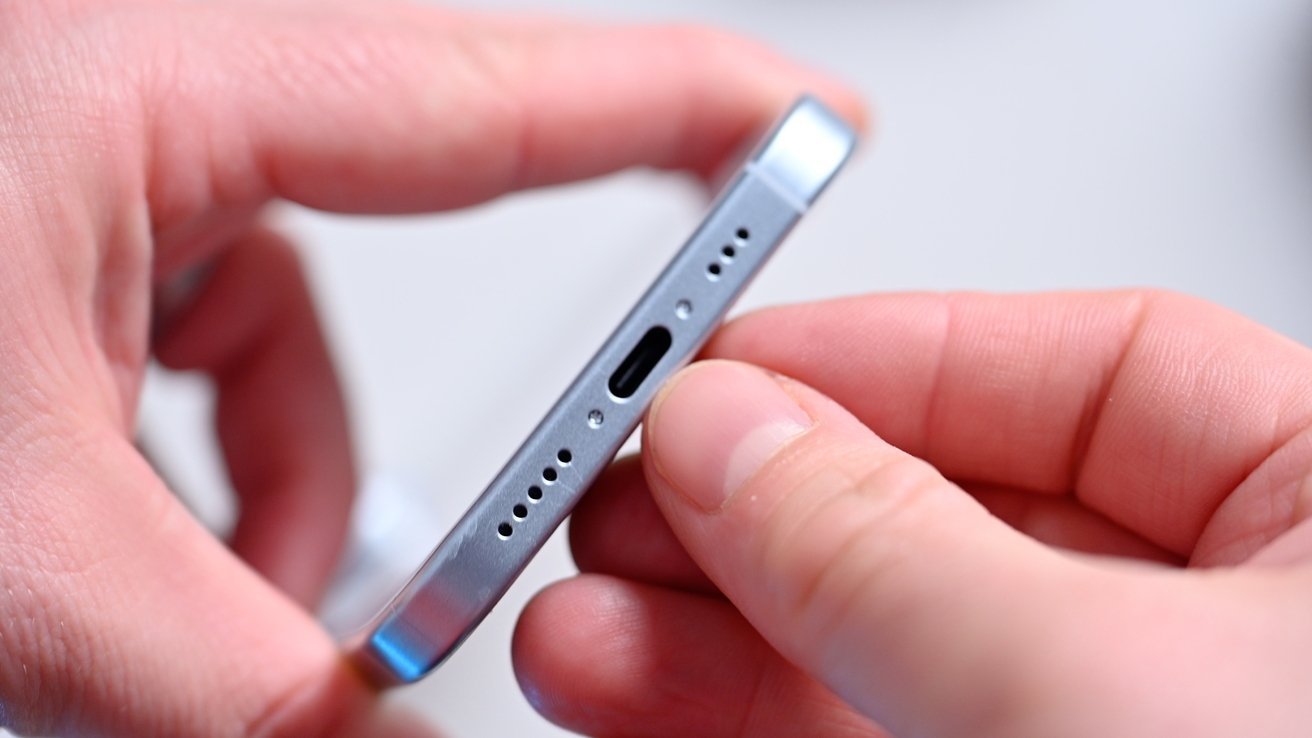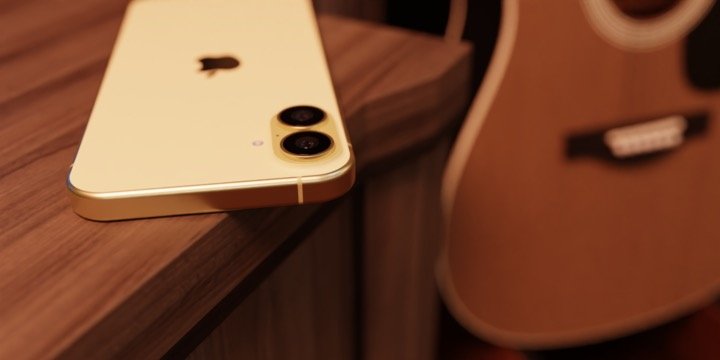The average time between iPhone upgrades is three years, and that means when the iPhone 16 launches, iPhone 13 owners will be in that window. Here’s what an upgrade from Apple’s three-year-old smartphone to the latest practically means.
Owners of Apple hardware tend to hold onto their devices for a long time. For a typical iPhone owner, they keep using their purchase for an average of three years before upgrading.
In May 2023, it was reported that 31% of iPhone owners held onto their iPhone for more than three years, with 30% doing so for between two and three years at a time.
Add in the widely-held belief that the iPhone 16 will be a supercycle encouraged by the inbound Apple Intelligence, and it gives those with older iPhones a good reason to get a new model.
For the iPhone 16, its three-year-ago counterpart would be the iPhone 13 generation. With three years of updates, there should be a lot for iPhone 13 owners to be tempted to upgrade.
This, based on iPhone 15 specs and iPhone 16 rumors, is what those iPhone 13 owners should expect with their upgrade
iPhone 16 vs iPhone 13 – Specifications
| Specifications | iPhone 16 (Estimated) | iPhone 16 Plus (Estimated) | iPhone 13 | iPhone 13 mini |
|---|---|---|---|---|
| Price (starting) | $799 | $899 | $699 | $599 |
| Dimensions (inches) | 5.81 x 2.82 x 0.31 | 6.33 x 3.06 x 0.31 | 5.78 x 2.82 x 0.30 | 5.18 x 2.53 x 0.30 |
| Weight (ounces) | 6.02 | 7.09 | 6.14 | 4.97 |
| Processor | A18 Bionic 5-core GPU |
A18 Bionic 5-core GPU |
A15 Bionic 4-core GPU |
A15 Bionic 4-core GPU |
| Storage | 128GB, 256GB, 512GB | 128GB, 256GB, 512GB | 128GB, 256GB, 512GB | 128GB, 256GB, 512GB |
| Display type | 6.1-inch Super Retina XDR | 6.7-inch Super Retina XDR | 6.1-inch Super Retina XDR | 5.4-inch Super Retina XDR |
| Resolution | 2,556 x 1,179 at 460ppi | 2,796 x 1,290 at 460ppi | 2,532 x 1,170 at 460ppi | 2,340 x 1,080 at 476ppi |
| True Tone | Yes | Yes | Yes | Yes |
| Biometrics | Face ID | Face ID | Face ID | Face ID |
| Connectivity | 5G (Sub-6GHz and mmWave) Gigabit-class LTE Wi-Fi 6 Bluetooth 5.3 Second-gen Ultra Wideband Emergency SOS via Satellite Roadside Assistance via Satellite USB-C |
5G (Sub-6GHz and mmWave) Gigabit-class LTE Wi-Fi 6 Bluetooth 5.3 Second-gen Ultra Wideband Emergency SOS via Satellite Roadside Assistance via Satellite USB-C |
5G (Sub-6GHz and mmWave) Gigabit-class LTE Wi-Fi 6 Bluetooth 5.0 Ultra Wideband |
5G (Sub-6GHz and mmWave) Gigabit-class LTE Wi-Fi 6 Bluetooth 5.0 Ultra Wideband |
| Rear Cameras | 12MP Ultra Wide 48MP Main |
12MP Ultra Wide 48MP Main |
12MP Ultra Wide 12MP Wide |
12MP Ultra Wide 12MP Wide |
| Video | 4K 60fps, 4K 60fps HDR with Dolby Vision, 1080p 240fps Slo-Mo Sensor-shift optical image stabilization Action Mode |
4K 60fps, 4K 60fps HDR with Dolby Vision, 1080p 240fps Slo-Mo Sensor-shift optical image stabilization Action Mode |
4K 60fps, 4K 60fps HDR with Dolby Vision, 1080p 240fps Slo-Mo Sensor-shift optical image stabilization |
4K 60fps, 4K 60fps HDR with Dolby Vision, 1080p 240fps Slo-Mo Sensor-shift optical image stabilization |
| Front Camera | 12MP TrueDepth Autofocus |
12MP TrueDepth Autofocus |
12MP TrueDepth | 12MP TrueDepth |
| Battery Size (Video playback time) | Up to 20 hours | Up to 26 hours | Up to 19 hours | Up to 17 hours |
| Colors | To Be Determined | To Be Determined | Midnight, Starlight, Pink, Blue, Green, (Product)Red | Midnight, Starlight, Pink, Blue, Green, (Product)Red |
iPhone 16 vs iPhone 13 – Physical dimensions
Arguably one of the most obvious set of changes to expect is the size of the device ranges. One is considerably more obvious than the other.
The iPhone 13 was available in standard and mini variants. However, the iPhone 16 is anticipated to be paired with a Plus model, just like the iPhone 15. Though the main release should be similar in general size, the alternative will be much, much different.
The iPhone 13 measures at 5.78 by 2.82 inches, and a thickness of 0.30 inches. The iPhone 15 is marginally longer at 5.81 inches and an identical 2.82 inches in width, while being 0.31 inches thick.
We can probably expect the iPhone 16 to be in the same sort of ballpark as the iPhone 15.
The iPhone 13 mini is 5.18 inches tall, 2.53 inches wide, and 0.30 inches thick. The iPhone 15 Plus is 6.33 inches tall, 3.06 inches wide, and 0.31 inches thick.
Since, again, the iPhone 16 Plus’ dimensions should be similar to the iPhone 15 Plus, it will be a big change for anyone upgrading from the iPhone 13 mini. Those users who prioritize a smaller handset will probably go for the iPhone 16 rather than the Plus equivalent.
One thing that should change is weight. Ignoring the obvious Plus v mini comparison, the iPhone 13 weighed 6.14 ounces, while the iPhone 15 was 6.02 ounces.
With Apple continuing to lean towards thinner and lighter designs most of the time, it’s plausible to expect the iPhone 16 to be closer to the iPhone 15 in weight if not just under 6 ounces.
iPhone 16 vs iPhone 13 – Display
Screen-wise, there shouldn’t be that much difference between the iPhone 16 and iPhone 15, since they’re both going to be Super Retina XDR screens. At least, if we’re talking about core technologies being used, and ignoring the Plus-mini comparison.
The standard iPhone 13 used a 6.1-inch screen, which the iPhone 16 should also match. The iPhone 13 mini used a 5.4-inch version, whereas the iPhone 15 Plus went for a 6.7-inch variant.
Resolution-wise, there’s a little improvement in the iPhone 15, which should also be seen in the iPhone 16. The iPhone 13 had a 2,532 by 1,170 resolution and a 460ppi pixel density, while the iPhone 15 went to 2,556 by 1,179 pixels, also 460ppi.
The iPhone 13 mini, for the record, had a 2,340 x 1,080 resolution and a 476ppi density, and the iPhone 15 Plus went for 2,796 by 1,290, a 460ppi.
The iPhone 13 had True Tone support, which the iPhone 16 should also match. The iPhone 13 also had a 2,000,000:1 contrast ratio, Wide color (P3) support, and Haptic Touch, which the iPhone 16 will probably match.
Brightness should be a big improvement between the generations. The iPhone 13 could manage 800 nits of typical max brightness, 1,200 nits for HDR.
The iPhone 15 offered 1,000 nits of typical max brightness, 1,600 nits for HDR, and up to 2,000 nits for peak outdoor brightness. It would be reasonable to expect the iPhone 16 to at least match the iPhone 15, if not surpass it.
There is one other thing that will change: the iPhone 13’s reviled notch will be gone. Apple used the Dynamic Island, a punch-hole camera camouflaged by informative UI elements, in the iPhone 15, and it could continue to do so for the iPhone 16.
iPhone 16 vs iPhone 13 – Cameras and buttons
The iPhone 13 and mini had two cameras, consisting of two 12MP Wide (now known as Main) and Ultra Wide shooters. They included Sensor-sift optical image stabilization, 0.5x and 1x optical zooms, and a diagonal arrangement on the rear of the device within a large square camera bump.
Current speculation for the iPhone 16 is that it will shift to a vertical arrangement, which will be more useful for taking spatial videos and photos for viewing in the Apple Vision Pro. That bump will also shrink.
In the iPhone 15, the Ultra Wide still used a 12MP sensor, while the Main was switched to a 48-megapixel version while retaining Sensor-shift OIS. The resolution change allowed for higher-resolution pictures to be shot, as well as the creation of a virtual 12MP 2x “optical zoom” by cropping into the middle pixels of the 48MP sensor.
It is unclear if Apple will change the sensors for the iPhone 16, but the iPhone 16 Pro and Pro Max are thought to change another of the cameras to a 48MP sensor.
Computational photography was a thing back with the iPhone 13, thanks to Deep Fusion. However, Apple has since introduced the photonic engine, which has made further improvements to picture quality.
In terms of video, the iPhone 13 could manage 4K 60fps HDR Dolby Vision footage, including 1080p 30fps Cinematic mode, and a 1080p 240fps Slo-mo. Since then, Apple has upped the Cinematic mode to 4K HDR at 30fps, introduced an Action Mode, and on the iPhone 15 Pro models, Log recording and ACES support.
The front camera has always been the TrueDepth array featuring a 12MP sensor, again with computational photography benefits and 4K 60fps video. Apple has widened the aperture over time, from f/2.2 in the iPhone 13 to f/1.9 in the iPhone 15, but it’s likely to be quite similar in the iPhone 16 releases.
A connected change in the iPhone 16 could be the move away from the side toggle switch, which the iPhone 13 used to mute the ringer. Instead, Apple added the Action Button to the iPhone 15 Pro models, which could be configured to take photos instead of muting audio.
It is thought that the Action button could migrate to the non-Pro models for the iPhone 16, which would change how you would take photos.
The rumor mill has also been discussing another button addition. The Capture Button is anticipated to be a dedicated camera button in a more conventionally-placed location if you were to hold the iPhone like a regular camera.
Though this is expected to be on the iPhone 16 Pro at a minimum, it may also appear on the iPhone 16.
iPhone 16 vs iPhone 13 – Processing and performance
It’s safe to say there will be a performance difference between the iPhone 16 and iPhone 13. Three years of chip development and improvements will certainly cause that to happen, but it remains to be seen how much that change will be.
The iPhone 13 uses the A15 Bionic, bearing a six-core CPU with four efficiency cores and two performance cores. It’s paired with a 4-core GPU and a 16-core Neural Engine, as well as 4GB of memory.
If the pattern of the last few years of upgrades continues, the iPhone 16 should have an A17 or rebranded A18 chip that’s similar in makeup and performance to the A17 Pro used in the iPhone 15 Pro and Pro Max.
That would be a six-core CPU with two performance cores and four efficiency cores again, but working faster. The GPU could be 5 or 6 cores, with each again offering performance improvements over the previous generation, a 16-core Neural Engine and potentially 8GB of memory.
The memory increase should help with the multi-tasking capabilities of the newer model.
Just as a point of comparison, the Geekbench results for the iPhone 13 give it a single-core score of 2,207, a multi-core score of 5,260, and a Metal score of 17,571.
The A17 Pro in the iPhone 15 Pro Max scores 2,888 for single-core (30% better), 7,161 for multi-core (36% better), and 26,971 for Metal (53% better).
If the chip in the iPhone 16 is comparable to the A17 Pro in specification, the gains over the iPhone 13 should be in the same ballpark.
When it comes to the Neural Engine the iPhone 16 should have a big improvement. The A15 Bionic’s Neural Engine was capable of 15.8 trillion operations per second at its peak.
By comparison, the A17 Pro could manage 35 trillion operations per second. Again, if the iPhone 16’s chip is basically an A17 Pro in spec, it will be operating at a similar level.
The better Neural Engine will be key for the iPhone 16, as it will enable the smartphone to handle all of the features of Apple Intelligence, the company’s AI push. The iPhone 15 Pro and Pro Max are the only current-gen iPhones that support Apple Intelligence, and any future releases will need to be as powerful or better to continue supporting it.
iPhone 16 vs iPhone 13 – Connectivity
The iPhone 13 had support for sub-6GHz and mmWave varieties of 5G, along with Gigabit LTE. It’s unlikely this will change for the iPhone 16, though physical SIM users will have to deal with eSIMs in the newer models.
The iPhone 13 has Wi-Fi 6 support, but the iPhone 16 could end up with Wi-Fi 6E or Wi-Fi 7, depending on Apple’s design choices. Bluetooth 5.0 in the iPhone 13 will be upgraded to at least Bluetooth 5.3 in the iPhone 16.
While the iPhone 13 does have Ultra Wideband support, it has since been updated with a second-gen chip in newer iPhones. The iPhone 16 should continue using the second-gen chip at a minimum.
NFC has been a longstanding feature, primarily used for Apple Pay. Again, this will almost certainly be available in the iPhone 16.
On the physical side, Apple moved away from the iPhone 13’s Lightning to USB-C in the iPhone 15, but still retained the data transfer rates at USB 2 speeds. While the iPhone 16 should have USB-C, it’s even money whether Apple actually ups the bandwidth.
iPhone 16 vs iPhone 13 – Power and battery
The iPhone 13 had a battery life of up to 19 hours of video playback, 17 hours on the mini. The iPhone 15 increased the amount to 20 hours, and up to 26 hours on the iPhone 15 Plus.
It’s probable that the iPhone 16 will have similar or better battery life when compared against the iPhone 15 generation. This should be an improvement on the iPhone 13 range, however you cut it.
Recharging wirelessly is handled by Qi, Qi2, and MagSafe support on the iPhone 13. There’s not really been any changes in this tech since then, so the iPhone 16 should be practically the same.
This also goes for wired charging, as fast charging using a 20W charger takes about 30 minutes for the iPhone 13 range. This has been maintained going to the iPhone 15, so it should be similar for the iPhone 16.
iPhone 16 vs iPhone 13 – Capacity, color, and pricing
The iPhone 13 used Face ID as its biometric security feature, which should persist with the iPhone 16.
The iPhone 15 offered users Emergency SOS via Satellite and Roadside Assistance via Satellite. Absent from the iPhone 13, these features should migrate to the iPhone 16.
One other feature that should migrate is Crash Detection, which uses onboard sensors to detect an impact and to automatically call for assistance. While the iPhone 16 should have this, the iPhone 13 does not.
The iPhone 13 has a water and dust resistance rating of IP68. It is unlikely for the iPhone 16 to fall below this level.
The iPhone 13 was available in 128GB, 256GB, and 512GB capacities. It’s plausible the iPhone 16 could continue these capacities, or even go one step higher to 1TB.
The iPhone 13 could be bought in six colors: Midnight, Starlight, Product Red, Blue, Pink, and Green. We don’t really know what the iPhone 16 will offer, but it should include at least black and white options to match Midnight and Starlight.
iPhone 16 vs iPhone 13 – Worth the upgrade?
At the time of writing, the iPhone 13 is practically hitting three years since its launch. At the time, it was the top non-Pro smartphone you could buy from Apple, and as usual, it was very popular with consumers.
However, we’ve had two years of smartphone improvements, and a third is on the way imminently. With a three-year average for upgrades, the iPhone 16 will be what iPhone 13 owners will most likely be considering for their new device, if they stay within the Apple ecosystem.
It’s obvious based on Apple’s history that there will be a lot of changes over three years. Outside, it may look pretty similar to the 2023 releases, but with small changes like the camera bump indicating its generation.
The processing capabilities should be impressive in the iPhone 16 versus the iPhone 13, again based on Apple’s previous form. Add in that Apple Intelligence will be a very important feature set that consumers will want to use, and that gives consumers reason enough to justify the purchase.
That’s even before you consider the 48MP camera sensor upgrades. The 12MP cameras are getting a bit long in the tooth, and iPhone 13 owners will probably jump at the chance of higher-resolution images.
However you break it down, it’s three years of improvements. Year-to-year changes are always going to seem slight, but three years compound them into a larger shift in performance and features.
Anyone upgrading their iPhone 13 to a new model and deciding to pick up an iPhone 16 will find it the best non-Pro iPhone experience ever. It just will be quite a jump up from what they’ve been used to for the last three years.


